Apple's latest twist on the venerable mouse could arrive as early as this year, possibly in conjunction with the imminent release of new iMacs, the company's flagship desktop computer. Existing iMacs are reported to be in short supply in many locations, according to people familiar with Apple's retail channel inventory.Â
The company's existing standalone Mighty Mouse product, which ships in both wired and wireless models, is also currently on a two week backorder through at least one of the Mac maker's direct fulfillment channels. Mighty Mouse availability hasn't been an issue within the past two years, people who deal in those channels say. This could be seen as further evidence that a new mouse may be hiding around the corner.Â
Designing a mightier mouse
Apple's next mouse is expected to do away with the Mighty Mouse's problematic mechanical roller ball, using expanded touch sensitive housing and "multipoint touch detection mechanism" technologies described in recent patent filings.Â
Given Apple's patented "inertia feedback" used on the iPod and iPhone, where item lists bounce when reaching the top or bottom and scrolling speeds accelerate in response to how the user touches the surface, the next Apple mouse is similarly expected to wed new hardware with sophisticated software to deliver an intuitive new feel in scroll navigation.
Should the new mouse arrive alongside revamped iMacs, it's also likely to drop the white plastic finish it formerly used to match previous Mac models. Informed speculation would suggest the new hardware could sport an aluminum appearance to fit in with Apple's current lineup of desktop computers and notebooks, though those familiar with the product have not commented either way. People familiar with the company's plans have indicated the new iMac will eventually receive a retooled IR remote that drops white plastic for an aluminum finish.Â
Thinking outside the mouse
The majority of Apple's systems are now notebooks with integrated, multitouch trackpads. Apple's investments in touch sensitive navigation have shown up in products from the iPod click-wheel to the iPhone and the multitouch trackpads on recent MacBook models. The existing Mighty Mouse only offers rudimentary touch sensitivity in comparison, featuring a two sided virtual button top that can be configured to respond to clicks either as a single button device or as separate right and left clicks.Â
Other types of Mighty Mouse navigation, including scrolling, require physical manipulation of the Mighty Mouse scroll ball button, a problematic mechanical device that appears to be salvaged from a previous decade. The soft rubbery button picks up dirt and oils and quickly becomes an irritating frustration to use, often losing responsiveness.
While Apple has recently delivered regular new advancements in sophisticated multitouch trackpad technologies for its MacBook line, its standard mouse for desktop users has only leisurely followed industry trends, picking up features such as Bluetooth wireless or optical LED and then laser tracking, for example. The arrival of a smarter mouse appears set to reverse that lagging pace of innovation.Â
Â
The modern, mundane Apple mouse
Apple's last several generations of mice have delivered disappointment, stretching back to the original iMac's "hockey puck" mouse introduced in 1998. While unveiling that year's iMac, Jobs called it "the coolest mouse on the planet." In reality, the round device was so impossibly difficult to orient in the hand that it helped spawn a third party flood of replacement devices, resulting in what many credit for kickstarting the shift to USB peripherals.Â
Â
Apple then stunned professionals by retaining the iMac's candy colored hockey puck mouse (with its old fashioned roller ball) for use with its high end Power Macs. In 2000, it finally shipped a more upscale version called the Apple Pro Mouse, using classier clear plastics in solid white or black, along with optical LED tracking that finally got rid of the dirt-collecting trackball.
A flat white Mighty Mouse appeared in 2005, with four independently programmable buttons: the top roller ball button, a thumb-and-finger pinch button, and two sensitive areas for right and left clicks, which could be combined to result in a simple one button mouse. A revised Bluetooth version shipped in 2006 with more accurate laser optical tracking.
On page 2 of 2: Steve Jobs: mouse advocate
The new mouse design has Jobs' fingerprints all over it, according to those familiar with the initiative. While Jobs hasn't always hit home runs (his iPod HiFi was a simple flop, while the luxury-priced PowerMac G4 Cube hit the market squarely after the dotcom bubble burst and its clever technologies resulted in various reliability problems for users), he is broadly recognized to have an incredibly sharp perception for discovering future trends, particularly in the area of usability.Â
The mouse is a good example. It was first conceptualized by computing pioneer Douglas Engelbart, working with Bill English back in the early 60s. Engelbart's two wheeled "X Y Position Indicator" mouse was intended to be used continuously along with a one-handed chording keyboard, but that complex vision of a future of 'computer aided intellect' never escaped the lab.Â
English brought the mouse idea to Xerox PARC in the early 70s, where he replaced Engelbart's wheels with a single ball that allowed a free range of motion. At PARC, the mouse was seen as an assisting pointing device to be used as needed, with both hands normally working on a standard keyboard. Despite public demonstrations of the technology, nobody brought the mouse to market commercially before the 1981 Xerox Star.
The Xerox Star was targeted toward businesses as part of an overall package (including networked laser printing and a file server) that started around $75,000. Xerox didn't anticipate the market for personal computing, and was bound by a 1975 FCC consent decree mandating compulsory licensing of Xerox’s patents, intended to prevent one company from dominating the tech industry.Â
Combined with the fact that Englebart's original mouse patents had expired, that left the door open for third parties to run with the mouse, but few saw any potential in it. When Apple employees saw the Star, they immediately recognized the future of graphical computing. Jobs in particular pushed to develop a mouse-based computing environment accessible to consumers. He hired a variety of Xerox engineers and allowed Xerox to invested a million dollars into Apple stock in exchange for a technology preview of various advanced ideas brewing in the Xerox labs.
Moving the mouse from the lab to marketÂ
While other Xerox technologies flowed out of PARC and were commercialized by Adobe (PostScript), Microsoft (Word), 3Com (Ethernet) and many others, nobody pushed mouse-based graphical computing as quickly or as completely as Apple did. It invested $50 million into developing the 1983 Lisa, and then produced a consumer version of the technology in the 1984 Macintosh, dramatically bringing down the cost of mouse-centric computing to a price point affordable to individuals.Â
Convincing the conservative computing establishment would take longer. In 1984, columnist John Dvorak wrote, "The nature of the personal computer is simply not fully understood by companies like Apple (or anyone else for that matter). Apple makes the arrogant assumption of thinking that it knows what you want and need. [...] The Macintosh uses an experimental pointing device called a ‘mouse’. There is no evidence that people want to use these things. I don't want one of these new fangled devices."
Apple continued to improve the mouse. While the Lisa's mouse was designed by Hovey-Kelley, an outside firm, Jobs pushed to make the Mac's mouse easier to use, with a larger button and a rubberized ball to replace the original's slippery steel ball. The boxy design of the Mac's original mouse was later flattened out for the Apple IIGS in 1986, where it also adapted use of Apple Desktop Bus, a flexible new cabling scheme designed by Steve Wozniak. Apple computers used ADB mice over the next decade.
Jobs adopted ADB ports at NeXT for his two-button mice, but Apple staunchly maintained the use of a single button for its Macs, based on research that showed entry level consumers were often confused by multiple buttons. In 1993, Apple issued an ADB II mouse with rounded sides, but made no further changes until Jobs returned and approved the USB hockey puck mouse for the iMac in 1998.Â
In between, however, Apple was largely focused on the growth happening in mobile systems, both with its PowerBook line and the stylus-driven Newton MessagePad. The PowerBook popularized the trackball on notebooks at a time when the vast majority of PC laptops were still running character-based DOS. Apple then pioneered the use of trackpads on notebook computers with the 1994 PowerBook 500.
It makes sense that Apple's engineering efforts would focus on its notebooks both then and now, as that's where the company has made most of its money. Still, the iMac's outdated Mighty Mouse with its physical scroll ball provides a significant opportunity for revising the desktop experience and bringing multitouch technologies already deployed on notebooks, the iPhone and iPod touch to the company's desktop users.Â
For more on Apple's upcoming Mac hardware announcements see:
Apple ready and waiting with redesigned iMac line
Apple close to unveiling all-new MacBook line
Apple to retain, redesign plastic MacBook family
Apple's next iMacs rumored with compelling new features
Apple may extend antiglare display option to more Macs
 Prince McLean and Kasper Jade
Prince McLean and Kasper Jade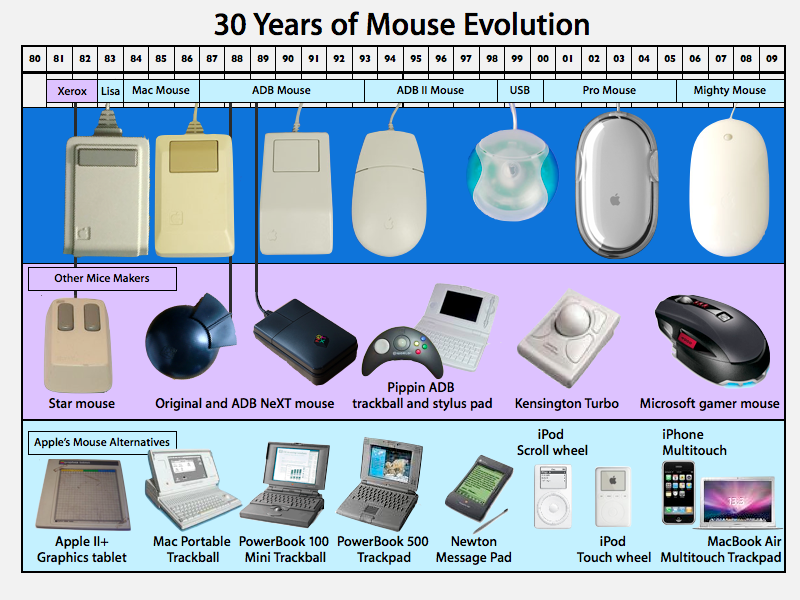




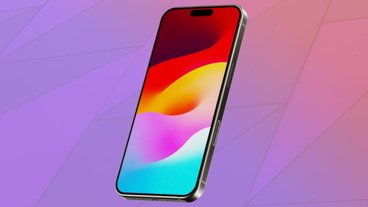


-m.jpg)






 Malcolm Owen
Malcolm Owen
 William Gallagher
William Gallagher
 Christine McKee
Christine McKee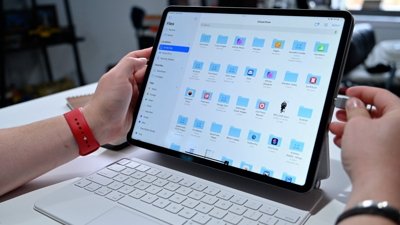
 Andrew Orr
Andrew Orr
 Wesley Hilliard
Wesley Hilliard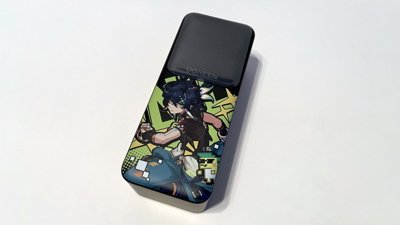
 Brian Patterson
Brian Patterson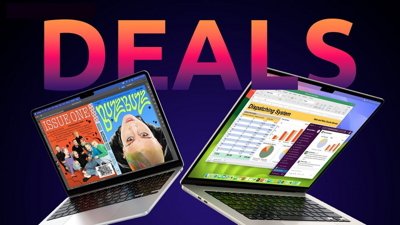

 Andrew O'Hara
Andrew O'Hara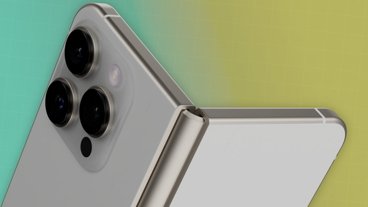
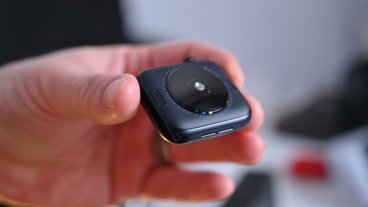
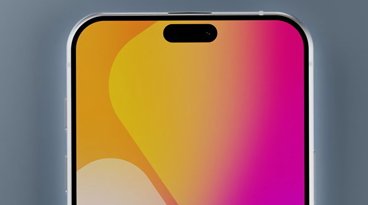






164 Comments
"Apple introduces the all new 'Minnie Mouse'"
Hopefully they will wipe Steve Jobs' fingerprints off before shipping as greasy finger marks would not be a very compelling consumer experience.
The quicker they replace that shitty clog-ball the better.
$50 says it's going to suck, like every mac mouse shipped by apple in the last 10 years
That's one of the reasons Logitech is so profitable... maybe they pay Apple to ship crappy mice...
... nah maybe not.
In 2000, it finally shipped a more upscale version called the Apple Pro Mouse, using classier clear plastics in solid white or black, along with optical LED tracking that finally got rid of the dirt-collecting trackball.
The classiest input device I've ever held in my hand, absolutely impractical, though.
(Ummm... Indeed. We all were black, like Steve, in those distant days.)